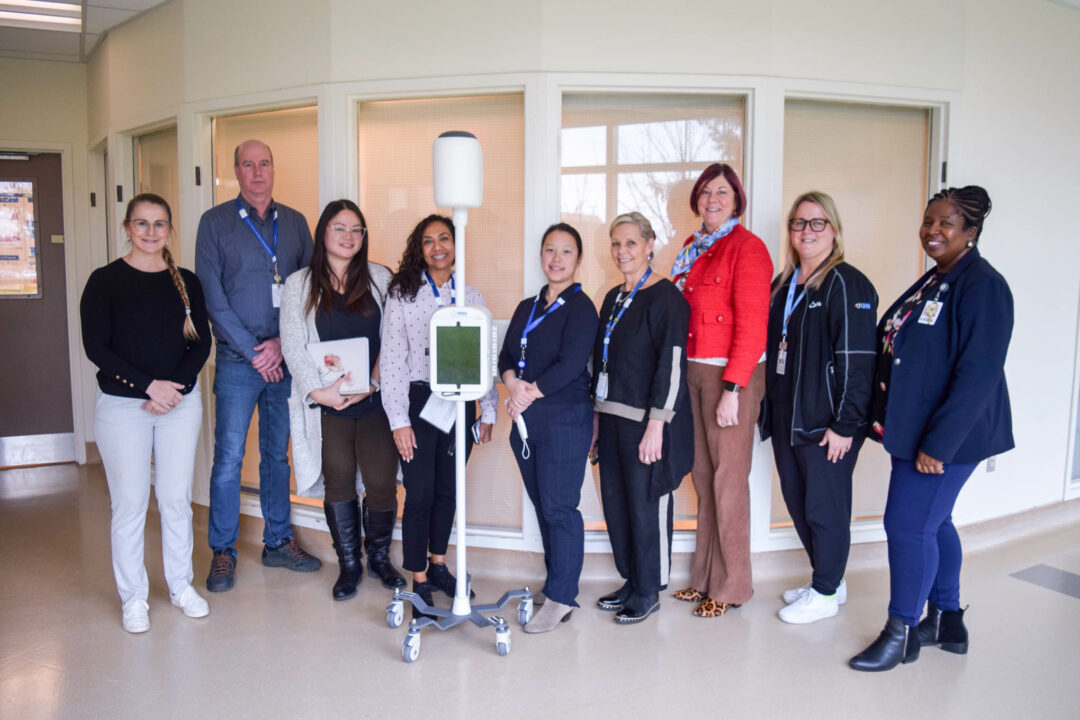Falls are one of the top patient safety incidents across many health care organizations. At Oak Valley Health, falls accounts for over 500 falls per year of varying levels of severity, or 23 per cent of all patient safety incidents. As a result, falls prevention continues to be our top quality and safety priority.
As part of our organization’s quality improvement plan (QIP), we committed to designing and implementing interventions to reduce falls with injury. One such intervention that is being trialled at Markham Stouffville Hospital is continuous video monitoring, which is an innovative solution that helps to reduce harmful falls and enhance and optimize care through ongoing, real-time observation dedicated to patients most at risk of falls.
On November 21, in partnership with Toronto’s University Health Network (UHN), we implemented a one-year pilot of Halo Remote Monitoring on units 2C (transitional care inpatient unit), 2E (medicine/AAU inpatient unit), and 3C (medicine/cardiology unit).
Since our launch, we have avoided over 100 patient safety concerns – such as high-risk falls, inability to call for assistance, and pulling of attached lines.
Carnett Howell-Belle, our patient care director for Acute Medicine and Critical Care Program
The Halo Remote Monitoring Program is an innovative technology launched through UHN that uses the assistance of artificial intelligence and provides continuous remote observation of patients in order to keep them safe in hospital. This program, which launched at UHN in 2016 and has since been implemented at other hospitals across Canada, has shown great improvements in reducing serious safety events related to falls as well as increased patient, family, and staff satisfaction.
Utilizing Halo Remote Monitoring will strategically augment our falls prevention bundle, which will include:
- Early risk screening for adult inpatient, outpatient, emergency, and obstetrics
- Patient and family education tools
“We are excited to have this innovative technology to remotely monitor medically appropriate patients who are at risk for falls,” says Carnett Howell-Belle, our patient care director for Acute Medicine and Critical Care Program. “This technology enhances patient safety, using the process of monitoring, identifying and responding quickly to prevent injuries related to falls.
“Since our launch, we have avoided over 100 patient safety concerns – such as high-risk falls, inability to call for assistance, and pulling of attached lines. The Halo Remote Monitoring technology has supported optimization of our health care resources by providing a safe option for remotely monitoring these patients.”
UHN’s Halo service is delivered from a command centre in downtown Toronto by staff who are trained and enabled to each keep an eye on eight patients simultaneously, replacing the need for one-on-one bed sitters.
This program aligns with our strategic plan by advancing technology and reinvesting in patient care, providing integrated seamless care, and enhancing the patient and family experience.
